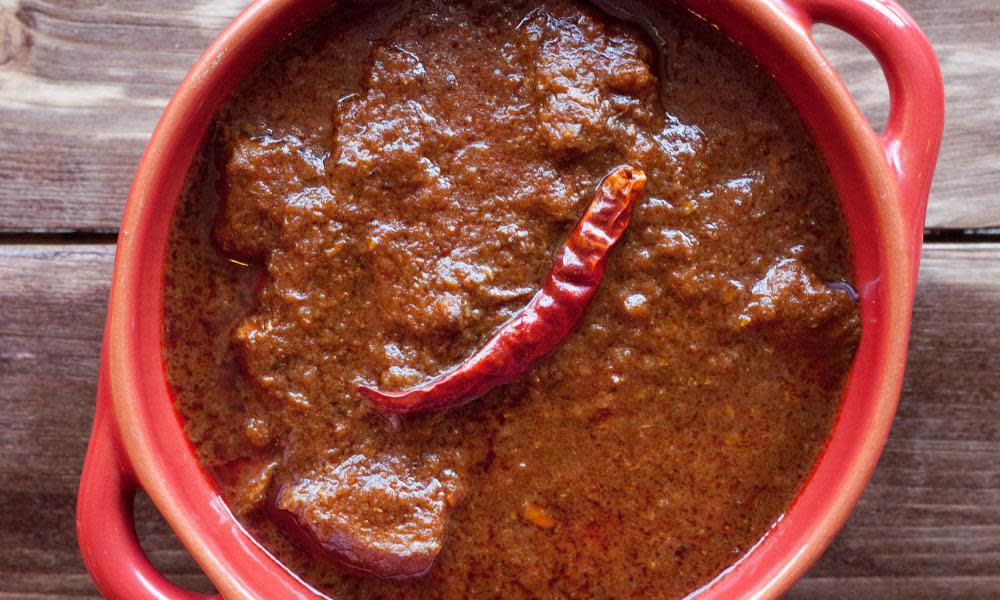In my search for an authentic Indian curry, I misjudged the vindaloo

When I was a teenager, we moved to the outskirts of London, and away from the “authentic” Indian takeaways plentiful in my former, ethnically diverse stomping ground.
We tried to make it work with our local joint, which catered to more western preferences. To me, the epitome of this was the vindaloo, a dish I never knew anyone Asian to make, favoured by tanked-up lads eating chillis competitively.
“We’re Asian, too,” we’d say when we ordered. “Make it like you would at home.” Sometimes Mum would go on a charm offensive, flattering the manager in Punjabi, or on the auntie offensive, bossing young staff about.
Rarely did these tactics work, so when a new “authentic” curry house arrived, it dominated the family WhatsApp. I collected the next order and joked with the owner about the cursed vindaloo. “But vindaloo is authentic,” he said, adding that I probably wouldn’t know anyone who cooked vindaloo because it’s from Goa. As Goa was colonised by the Portuguese, there aren’t many Goans in Britain. “In the UK, it’s usually Bangladeshi chefs cooking it, adding their flair. But vindaloo in Goa is technically a spin-off of a Portuguese dish anyway.”
Related: Who's got time to switch off? I suffer from the modern affliction of 'busyness'
I thought about my own desire for authenticity, ostensibly as a short cut for certain tastes but, more deeply, a need for respect for the traditions of groups – my groups – otherwise derided. I felt bad for sneering at what I was supposed to revere.
So when I opened the bag to find a free sample of vindaloo, I smiled at how “me” the dish actually is: made in Britain with European and Asian influences, too spicy for basic lads, with notes of bitterness throughout. Was it authentic? That’s too simplistic a question. Was it delicious? Now, that’s a question worth asking.

 Yahoo News
Yahoo News 
